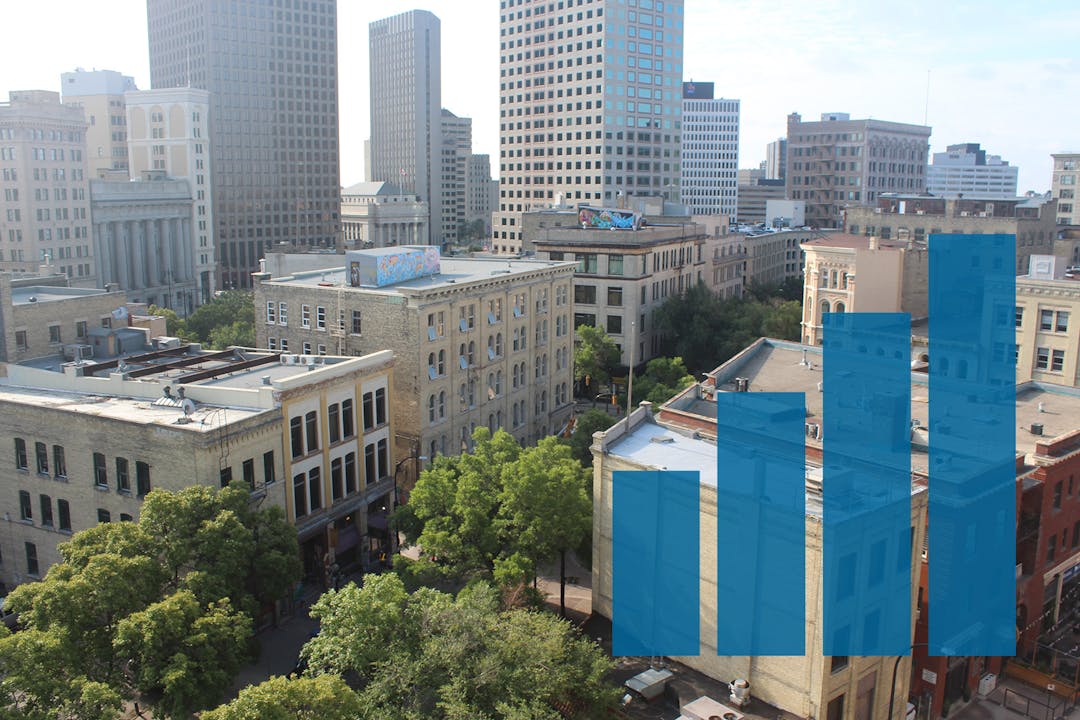Small Cell Technology Review
Consultation has concluded

Up to date information about the Small Cell Technology Review is now available here.
In Winnipeg, mobile devices like cell phones traditionally get service from large (“Macro”) cell phone towers and antennas so we can access internet, phone, and texting services.
Small cells are smaller versions of those towers that can complement larger radio installations to improve coverage, add capacity, and support new services and user experiences. About the size of a home Wi-Fi router, they are small enough to be installed atop poles, lampposts, on the sides of buildings, or on traffic signals. Their weaker signal only covers aContinue reading
Up to date information about the Small Cell Technology Review is now available here.
In Winnipeg, mobile devices like cell phones traditionally get service from large (“Macro”) cell phone towers and antennas so we can access internet, phone, and texting services.
Small cells are smaller versions of those towers that can complement larger radio installations to improve coverage, add capacity, and support new services and user experiences. About the size of a home Wi-Fi router, they are small enough to be installed atop poles, lampposts, on the sides of buildings, or on traffic signals. Their weaker signal only covers a small geographic area, so multiple small cells are necessary to equal the coverage of a Macro tower.
Small cells are required for 5G service, the fifth generation of wireless technology. 4G service has been available in Winnipeg for several years, and is currently deployed on the traditional (Macro) cell phone tower system. While existing 4G service would benefit from a shift to small cells, 5G service is dependent on small cells to support better coverage, substantially increased speeds, and other features.
The Government of Canada is responsible for regulating all forms of cellular technology, while the City of Winnipeg (City) has a role in guiding the location, design, and information to the community for the introduction of antenna systems on City-owned assets in Winnipeg.
The City is seeking to better understand the opportunities, issues, and value of small cell technology and the implementation of 5G service. In Phase 1, we asked for feedback to help us better understand the level of awareness and views about small cell technology in Winnipeg. Further technical results and outcomes will be published via the small cell website (winnipeg.ca/smallcelltechnology).
Information will be provided across three phases:
Phase 1: Collect feedback to inform aspects of the trial
Future communication: Further technical results and outcomes will be published via the small cell website (winnipeg.ca/smallcelltechnology)
The following information illustrates roles based on current policies and guidelines, which will be part of the review:
City-owned Assets | Manitoba Hydro Infrastructure | Privately-owned Lands/Buildings | ||
Exempt Locations | Private Sites | |||
Description | Towers or small cells on/in City-owned land or buildings | Installations of antenna/small cells on existing MB Hydro infrastructure through lease agreements with MB Hydro and exempted under the City Encroachment By-law | Locations where antenna system proposal review and public consultation is exempted by the Winnipeg Antenna System Policy | Lease agreements with individual property owners for sites available on the open real estate market |
City Role |
| No role | No role | Letter of Concurrence/Non-Concurrence on buildings/ structures based on conformity with the WASP |
Examples |
|
|
|
|
We want to know:
Phase 1:
- What are residents’ thoughts about small cell technology?
We commit to:
- Passing feedback along to decision makers, including a report on how feedback was considered by the Public Service.
- Informing residents on progress related to trials.
Background
Wireless service providers are interested in introducing new service delivery methods – such as 5G networks – to improve cellular reception and performance throughout Winnipeg. Carriers are now planning to introduce Small Cells sites in Winnipeg. These will supplement the traditional large scale Macro Cell towers that are currently used.
The City of Winnipeg is not responsible for the regulation or monitoring of radio communications. Canada’s Radiofrequency Exposure Guidelines are developed at the federal level by Health Canada (Safety Code 6) and regulated by Innovation, Science and Economic Development (ISED). Any company operating 5G or Small Cell technologies in Winnipeg would be required to adhere to these guidelines.
The City’s role is explained in this document, including the Winnipeg Antenna Systems Policy (WASP). The goal of the WASP is to ensure there is a reliable communications network in the city, while at the same time protecting the safety of residents and minimizing adverse visual impacts on the community. The WASP was adopted by City Council, as amended on May 27, 2015.
-
CLOSED: This survey has concluded.Consultation has concludedShare Survey on Facebook Share Survey on Twitter Share Survey on Linkedin Email Survey link




